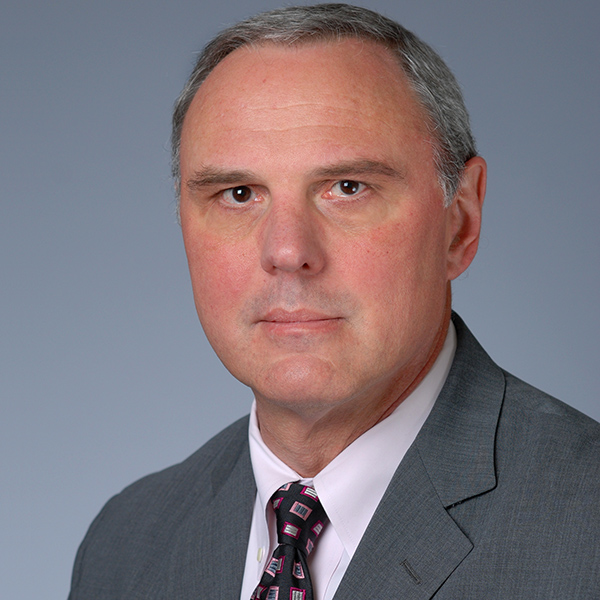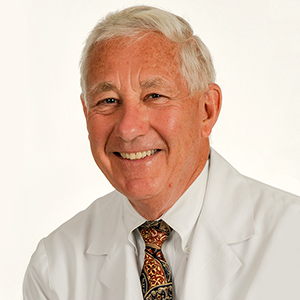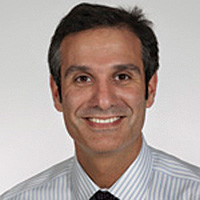Feature Story | Cardiovascular Trends in 2018

The rapid pace of change continues to be a hallmark in cardiovascular medicine and many see that pace accelerating. In just the last year, a record of 46 new drugs were approved by the U.S. Food and Drug Administration (FDA). New devices are coming online just as rapidly. Mirroring this pace is the record number of clinical trials that are reported at ACC’s Annual Scientific Session each year.
Leaders in cardiovascular medicine interviewed by Cardiology anticipate the cardiovascular drugs and treatments that advanced in 2017 will have an even greater impact in the coming year. Among the areas they expect great progress: the role of PCSK9 inhibitors; recognition of the impact of inflammation on cardiovascular disease; the percutaneous placement of aortic and mitral valves; and a larger role for wearable and implantable devices and the data they collect. Atrial fibrillation (AFib), heart failure, diabetes and cardio-oncology will be among the most prominent disease areas.
 Deepak L. Bhatt, MD, MPH, FACC
Deepak L. Bhatt, MD, MPH, FACC“The ODYSSEY Outcomes trial will define the role of PCSK9 inhibition in cardiovascular medicine,” says Deepak L. Bhatt, MD, MPH, FACC, senior associate editor of ACC.org. Indeed, the results — presented at ACC.18 during the Opening Showcase — have provided much for cardiovascular professionals, insurers and policy makers to consider over the year ahead. Immediately on the heels of the presentation of the positive results, the manufacturer proposed reducing the price if insurers reduce the barriers for approving payment of the drug for individual patients. Clearly, this is a discussion that will be closely watched for its impact on the pricing of both alirocumab and evolocumab, which was studied in FOURIER.
ODYSSEY Outcomes showed that biweekly injections of alirocumab reduced cardiovascular outcomes and all-cause deaths by 15 percent in nearly 19,000 patients with acute coronary syndrome (ACS) and higher-than-ideal atherogenic lipoprotein levels despite intensive or maximally tolerated statin therapy over the mean 2.8 years of follow-up. Has the “sweet spot” for benefit been found and will this contribute to the payment discussion? A post hoc analysis in a prespecified subgroup found patients with a baseline LDL-C ≥100 mg/dL had an absolute risk reduction of 3.4 percent for major adverse cardiovascular events (MACE); 0.9 percent for coronary heart disease death; 1.3 percent for cardiovascular death; and 1.7 percent for all-cause death.
“We’re in a new era for the treatment of cholesterol,” says ACC.org Editor-in-Chief Kim A. Eagle, MD, MACC. While noting these human injectables that block the PCSK9 receptor appear to be a clear step forward, he acknowledges they are financially challenging. “We’ll continue to see efforts to determine their proper use for patients with atherosclerotic diseases, both of the brain and the heart.”
 Douglas L. Mann, MD, FACC
Douglas L. Mann, MD, FACC
Another potential contribution to a new approach to treating hyperlipidemia may be small interfering RNA (siRNA)-based drugs that target PCSK9 messenger RNA. One of these drugs, inclisiran, was shown in the ORION-1 study reported at ACC.17 to provide significant, dose-dependent and sustained reductions in LDL-C in patients at high cardiovascular risk. “There’s pretty robust data with this approach, and there’s an exciting potential to reduce outcomes in a striking way,” says Douglas L. Mann, MD, FACC, editor-in-chief of JACC: Basic to Translational Science.
What will be the impact of the COMPASS trial reported in late 2017? And a new analysis from the study presented at ACC.18 suggests that the combination of low-dose rivaroxaban and aspirin significantly lowers the incidence of both MACE and major adverse limb events in patients with lower extremity peripheral artery disease. “COMPASS has the potential to be practice-changing in a large proportion of patients with stable coronary or peripheral artery disease,” says Bhatt. The cardiology community will be watching to see whether the FDA approves very low dose rivaroxaban in combination with aspirin for this indication. If this is approved, “it’ll be interesting to see how physicians integrate the COMPASS data with all the other possible options for long-term antithrombotic therapy,” adds Bhatt. Yet, a challenge is the lack of direct comparative data among the possible antithrombotic options to weigh the risks of complexity of care, bleeding and cost.
Also evolving is the anticoagulation arena with the introduction of new agents that replace warfarin in patients who have both venous thromboembolic disease and AFib. “We’re starting to see studies evaluating those same compounds — sometimes in smaller doses — to determine if there’s benefit in patients with arterial disease,” says Eagle.
"We’re in a new era for the treatment of cholesterol. We’ll continue to see efforts to determine their proper use for patients with atherosclerotic diseases, both of the brain and the heart." — Kim A. Eagle, MD, MACC
Perhaps the newest kid on the block is drugs that target inflammation. Data presented in 2017 suggested that powerful anti-inflammatory drugs may have an effect on atherosclerotic heart disease in certain patients. “The results from the CANTOS trial may be a glimpse into future treatment strategies,” says Eagle. Among the results to sort through come from presentations at ACC.18. An analysis from CANTOS showed MACE was reduced with canakinumab in high-risk atherosclerosis patients with moderate to severe chronic kidney disease. But, a secondary endpoint analysis showed the drug did not halt the progression from prediabetes to diabetes.
An exciting breakthrough — especially for patients with heart failure — is the role of sodium-glucose transport-2 (SGLT-2) inhibitors. “The overall impact of this class of drugs on cardiovascular outcomes and heart failure outcomes is striking,” says Mann. Another piece of evidence came from the CANVAS study presented at ACC.18, showing that canagliflozin reduced the risk of cardiovascular death or heart failure hospitalization in higher risk patients with type 2 diabetes – and the benefit was greater in patients with heart failure at baseline.
“The intersection between diabetes and cardiovascular disease will become more apparent,” adds Bhatt. This will include cardiologists taking an active role in the study and treatment of diabetes, obesity and related conditions, he adds. “There’ll be increasing interest and focus on the evaluation of novel diabetes drugs in cardiovascular populations, examining potential benefits on ischemic as well as heart failure endpoints.”
 Richard Kovacs, MD, FACC
Richard Kovacs, MD, FACC
“The cardiovascular (CV) team will continue to expand,” says Richard Kovacs, MD, FACC, chair of ACC’s Science and Quality Committee and vice president of ACC. Not only will this include cardiologists working with diabetes care providers, but also with oncologists in the expanding new field of cardio-oncology.
Health Care Delivery
“The biggest impact over the next year will be trying to further refine our health care delivery,” says Jagmeet P. Singh, MD, PhD, FACC, deputy editor of JACC: Clinical Electrophysiology. Singh predicts a culture shift from episodic care to continuous care that will significantly reduce health care costs in the long run. How will this happen? “Integration of data from wearable and implantable technology will be integrated into the electronic health record,” Singh adds.
Supported by deep learning and artificial intelligence, these data will allow risk stratification and focused interventions on the right patient at the right time in the right place. Look for a greater role for telemedicine and remote monitoring of patients to proactively target acute care and reduce readmissions. AFib and heart failure will be a major focus of these efforts.
 Fred Bove, MD, MACC
Fred Bove, MD, MACCThis will also usher in a new era of greater collaboration between the patient and the physician and health care system, and more self-management by the patient enabled by telecommunications, says Fred Bove, MD, MACC, editor-in-chief of Cardiology magazine.
Bove also offers an intriguing proposal for augmenting health care delivery: health coaches. “We’re moving into an era that’s driving an interest in population health,” he says. A trend over the last couple of years has been an increasing focus on population health, and this along with new guidelines for hypertension from the ACC and American Heart Association, is a firm reminder of the need for a novel population health approach, he adds.
Managing the full range of risk factors, including inflammation, to prevent coronary artery disease and address secondary prevention of events, is a public health issue, not one for an individual physician, says Bove. Outcomes-based reimbursement is one way to adapt newer care models, with greater reimbursement for better outcomes, suggests Bove. Someday will the CV team include a health coach who focuses on motivating patients to undertake and adhere to the changes needed to improve their obesity and diabetes and other conditions to reduce their cardiovascular risk?
“The CV team is operating in an environment of regulatory and payment change,” notes Kovacs. Accountable care organizations, bundled payments and alternative payment models of all types are “requiring the CV team to adapt to the stuttering shift from volume to value,” he adds. These changes will require the CV team to learn, adapt and pivot to multiple demands. New skills will be required, some of which “will be outside our usual comfort zone,” he adds. To thrive in the turbulent environment, the CV team will need to stay connected to trends in cardiology as well as trends in medicine overall and in regulation and payment.
"The biggest impact over the next year will be trying to further refine our health care delivery. Integration of data from wearable and implantable technology will be integrated into the electronic health record." — Jagmeet P. Singh, MD, PhD, FACC
A review of the 30-day readmission policy and its potentially negative impact by the Centers for Medicare and Medicaid Services (CMS) is on Mann’s wish list. “There’s more research showing outcomes are not improved, particularly in heart failure, by implementing the 30-day readmission rules,” says Mann, noting that heart failure mortality is now increasing. Mann thinks that it is time for CMS to carefully review this policy.
Beyond his wish list, Mann comments that a great unknown that will impact the practice and delivery of health care is the removal of the mandate to purchase health insurance in the new tax law that was enacted. “I see this as being potentially very significant in 2018,” he says. The impact on different health care markets is not clear, and while it’ll affect everyone, he sees a disproportionate effect on hospitals that provide a lot of indigent care. Yet, as a glass half-full person, Mann says there are opportunities for the cardiovascular community to improve patient care in a cost-effective way.
Interventional Cardiology and More
In the mitral valve space, there’s great anticipation for continued advances in mitral valve repair and percutaneous mitral valve replacement. Many leaders anticipate this area to eventually enjoy the same success as transcatheter aortic valve replacement (TAVR) – and to be another game-changer as was TAVR. The technology in the mitral valve area is steadily and rapidly advancing. And percutaneous mitral valve procedures are already being performed in Europe.
 Peter C. Block, MD, FACC
Peter C. Block, MD, FACCTAVR will continue to evolve. Peter C. Block, MD, FACC, editor-in-chief of Cardiology: Interventions, believes there’ll be a continued evolution in using TAVR over surgery in lower risk patients. As more data comes from randomized clinical trials in the U.S. showing at least equivalence in outcomes in lower risk patients, this will reinforce the trend. And data from current trials may well show that patients at extremely low risk, with a Society of Thoracic Surgeons score of 3-4, will have equivalent outcomes with TAVR and surgery.
Interestingly, Block notes the true significance of this shift is not about the technology but about the concept of how we treat patients with aortic stenosis. Surgical aortic valve replacement will be relegated to patients who have associated proximal aortic disease or aortic regurgitation, primarily without much calcification. “This will greatly change the training of surgeons for replacing an aortic valve,” says Block, because these will be performed with TAVR. “There’ll be a closer and closer collaboration and convergence between cardiac surgery and interventional structural heart disease,” he adds. And, this will continue on many fronts, such as with mitral valves as that area matures.
Where a shift in technology will occur, states David J. Moliterno, MD, FACC, editor-in-chief of JACC: Cardiovascular Interventions is in the treatment of valvular heart disease beyond the aortic stenosis. “While the interventional treatment of aortic valve disease has largely been loosening the noose of aortic stenosis, the treatment of aortic insufficiency and perhaps more so mitral and triscuspid valve diseases will bring new technologies.” Moliterno adds, “The mitral valve, in particular, has several different technologic ways to address its deterioration, whether targeting the dilated annulus, the dysfunctional chordae or the degenerated leaflets, many new devices and techniques will be explored in 2018.” This is important as a population health issue because mitral and triscuspid valve diseases occur at a higher prevalence than aortic valve disease.
 Anthony N. DeMaria, MD, MACC
Anthony N. DeMaria, MD, MACC
The role of noninvasive imaging, including transesophageal, to assess structural heart disorders will continue to be a prominent trend in 2018, especially to guide therapeutic decisions and procedures, says Anthony N. DeMaria, MD, MACC, editor-in-chief of Structural Heart: The Journal of the Heart Team.
Imaging will become much better within interventional cardiology, says Block. He predicts there’ll be more types of interventions that are dependent on being able see the exact location within the heart in 3D and having mechanical assistance. This may be in the form of computer-assisted technology or robotic assistance or better imaging, and most likely will draw on each of these. Further on, as this matures and we have better software technologies, there’ll be important improvements in transcatheter ways of addressing cardiac disease, says Block.
 Kreton Mavromatis, MD, FACC
Kreton Mavromatis, MD, FACCThe ORBITA trial will continue to be a focus this year, as the cardiovascular community continues to digest the results and what they mean for how percutaneous interventions are approached, particularly with insurance companies, says Mann. “The results of this very small and underpowered trial will not change what I’m doing, but I think it’ll impact our community in ways we have not totally figured out,” he adds. Read more about the ORBITA trial and a perspective from Block and Kreton Mavromatis, MD, FACC, in the November-December 2017 issue of Cardiology: Interventions.
An exciting new development in electrophysiology is a noninvasive approach to treating ventricular tachycardia using stereotactic radioablation, which is currently being used to treat patients with solid tumors. Success has been shown with this technology in a small pilot trial of five patients with refractory ventricular tachycardia in work published in the New England Journal of Medicine. Mann believes this therapy may be a harbinger of noninvasive ways to ablate arrhythmias in the future.
"While the interventional treatment of aortic valve disease has largely been loosening the noose of aortic stenosis, the treatment of aortic insufficiency and perhaps more so mitral and triscuspid valve diseases will bring new technologies." — David J. Moliterno, MD, FACC
Looking farther down the road to 2025, Block predicts a decrease in the volume of interventions. The risk of developing coronary disease will be reduced as LDL-C levels are lowered to astonishing low levels with more powerful drugs such as the PCSK9 inhibitors. And with a greater understanding of what lipoproteins should and should not be treated. DeMaria notes there’ll be an increasingly prominent role of Lp(a) in the etiology of atherosclerosis and valve disease, particularly calcific aortic valve disease, and their treatment.
Staying connected and current as well as navigating the changing tides is indeed a challenge, says Eagle. The College continues to evolve to meet the immediate education needs of its members and the cardiovascular community. Podcasts and slide summaries, news stories and trial updates, key points to remember and journal scans are among the tools published daily on ACC.org. Don’t miss all the coverage, including video reports, of ACC.18 — and see which of these trends made headlines!
Keywords: ACC Publications, Cardiology Magazine, Accountable Care Organizations, Acute Coronary Syndrome, American Heart Association, Antibodies, Monoclonal, Aortic Diseases, Aortic Valve, Aortic Valve Stenosis, Aortic Valve Insufficiency, Arrhythmias, Cardiac, Aspirin, Atherosclerosis, Atrial Fibrillation, Brain, Cardiovascular Agents, Cardiovascular Diseases, Cholesterol, Coronary Artery Disease, Coronary Disease, Diabetes Mellitus, Type 2, Electronic Health Records, Electrophysiology, Fibrinolytic Agents, Follow-Up Studies, Glucose, Health Care Costs, Health Care Sector, Heart Defects, Congenital, Heart Failure, Heart Valve Diseases, Heart Valve Prosthesis, Hydroxymethylglutaryl-CoA Reductase Inhibitors, Hyperlipidemias, Hypertension, Hypoglycemic Agents, Incidence, Inflammation, Insurance Carriers, Lipoproteins, Medicaid, Medicare, Mitral Valve, Neoplasms, Numbers Needed To Treat, Obesity, Patient Readmission, Peripheral Arterial Disease, Pharmaceutical Preparations, Prediabetic State, Prevalence, Public Health, Renal Insufficiency, Chronic, Risk Factors, RNA, Messenger, RNA, Small Interfering, Secondary Prevention, Self Care, Surgeons, Tachycardia, Ventricular, Telemedicine, Transcatheter Aortic Valve Replacement, Uncompensated Care, Warfarin
< Back to Listings

